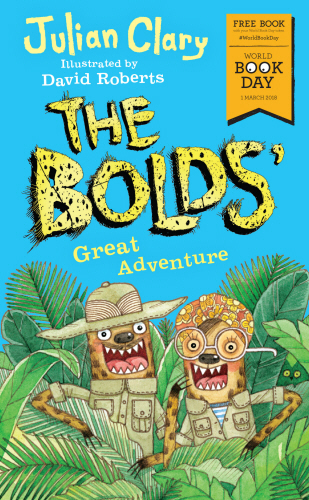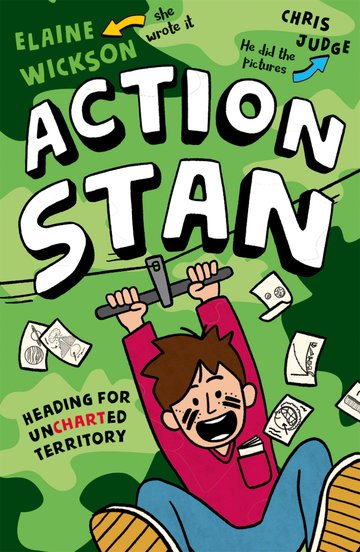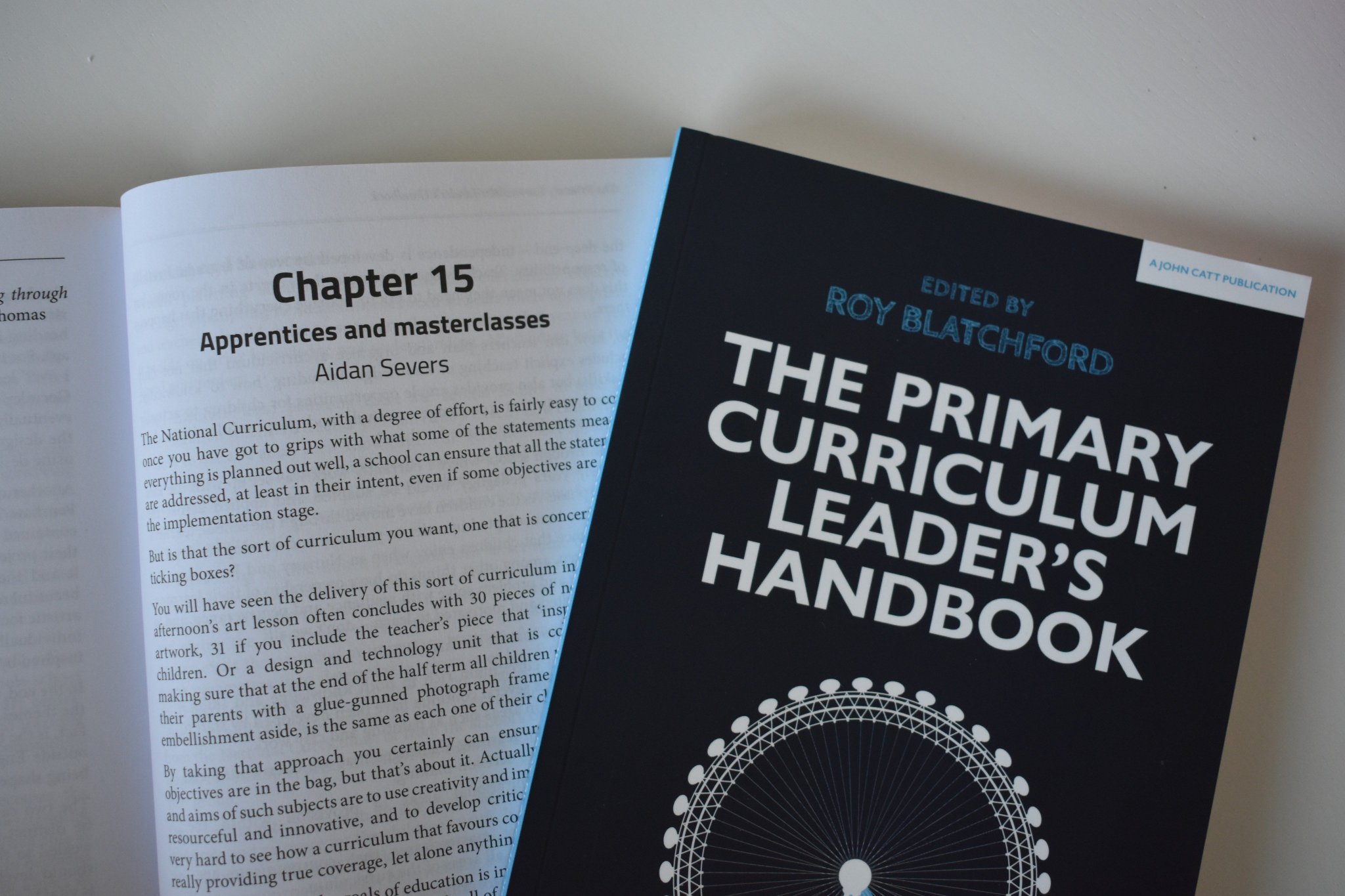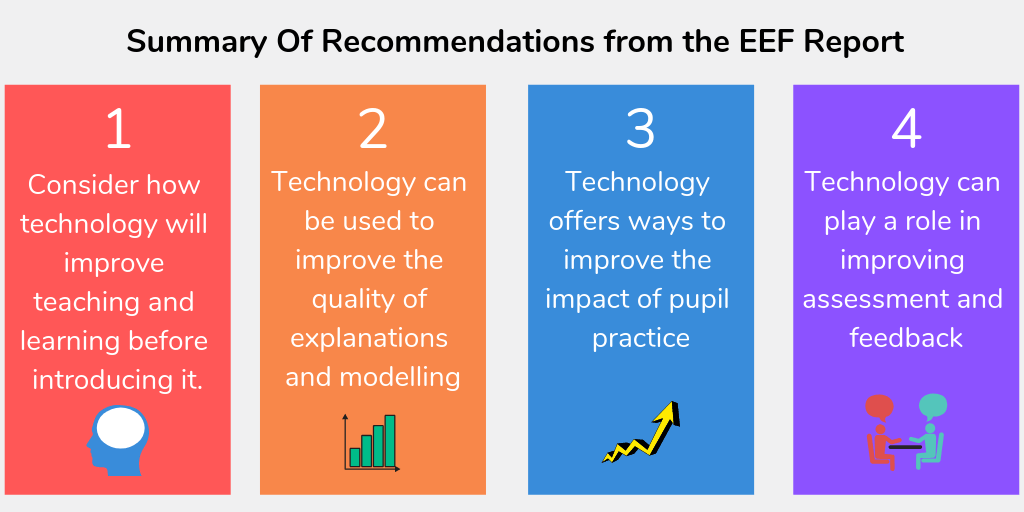In our house we have recently revamped the bedtime routine to contain A LOT more reading. This was partly out of necessity - the nights are so light that they couldn't go to sleep as early as they do when it is dark. They were also doing some pretty wild stuff pre-bedtime which DID NOT make them at all calm or ready to sleep. The answer: you already know: reading, of course!
As a result, my three children have read a ridiculous number of books and now they have industriously written a whole host of comments about the books for you. Here are the books they've chosen along with a few of their thoughts on them:
When Tyler is sent to summer camp, she can’t resist packing one of her latest science projects – the Hologramaphone 3000. Problem is, some of the phone’s functions have EXTREME side-effects, the kind that can turn your best-friend into a ferocious werewolf!
But when Tyler, Dylan and Ashley band together, there’s no problem that they can’t solve – no matter how big, hairy, and terrifying.
You would definitely so love it! I would probably say ages from 6 -10. Well, maybe. Apart from that, I would still recommend it to friends and family. - A, 7
I liked the part where they sneak into Pipper's office to get Tyler's Hologramaphone 2000 because Courtney and Pipper suddenly come in and Courtney starts talking about how clever she is. There's a really funny bit where Courtney says: "You can't say werewolves are real until you've actually see one." That bit's soooo funny! This book is 10/10 is for 7-13 year-olds. My favourite character is Courtney because she is show-y-off-y and funny. Enjoy! - I, 8
A swimming lesson takes an exciting turn when Fliss is magically whisked away to the Indian Ocean! There she finds a young dolphin in trouble and she knows she has to help. But she’s scared of deep water, and who knows what other animals there might be out there! Can Fliss face her fears and save her new friend?
A beautifully detailed book. I liked the bit where Fliss swam right up to the tiger shark and bopped it on the nose, just to save Spinner. I think Fliss was very brave to swim out of her depths, right next to a whale shark! I liked how welcoming and kind the author made Izad. I also liked how the author explained about the reef and how beautiful it was. I would highly recommend this book to friends and family. I think it was a very good book! It was awesome! - I, 8
The Flute by Ken Wilson-Max, Illustrated by Catell Ronca (Tiny Owl)
Hear the whisper of the flute and see how it floats like a butterfly or blows like cold, grey wind. Discover how music can make you move and feel!
"I like Tiny Owl - he's a good book owl, isn't he?"
This book is about playing the flute. The flute makes nice noises but the sounds are like colours. It makes me feel like I want to play the flute and make a nice song with it. I like the part at the end where is says 'And a lilac sigh' because it has lots of colours. I like the colours in this book. - J, 5
Click here to watch a video of Ken Wilson Max reading The Flute.
The Bolds' Great Adventure by Julian Clary, Illustrated by David Roberts (Andersen Press)
Fasten your seatbelts - it's a special adventure for World Book Day with Teddington's wildest family! Learn just how our intrepid hyenas managed to get from their African safari park onto the plane and off to their new home in England. It's quite a remarkable, and some would say, unbelievable tale - but there are many laughs along the way!
The Bolds are Hyenas. One day, the find some safari clothes lying near a river. There they found clothes, keys and passports. So they decided to travel to England. When they get there, they get things so muddled up! Mum poops in the shower, eats a wooden fruit and other bad stuff!
I liked the jokes that Mr. Bold makes up - they are very extremely funny!
This book is all about trying hard and listening and it is very fun.
Thank you for making this book, Julian Clary and David Roberts! - A, 7
The Hideaway Deer by Holly Webb, Illustrated by James Brown (Stripes)
When Lola moves house she can’t help feeling sad to leave her old friends and life behind. She’s always been shy and worries it’ll be hard to make friends at her new school. It’s not all scary, though. Lola loves her new home with its rambling garden and the deer that sometimes wander in through the broken fence.
Then one day she comes across a fawn who seems to be in trouble. Lola is determined to do everything she can to help the terrified little deer, but will she be able to do it on her own?
This book is amazing! It's all about a deer who has lost her mum. Her name is Dapple.
This book is all about growing up, leaving your animal friend and moving places.
I liked the bit when Lola stands in front of her class and talks about freeing the deer. - A, 7
Aunt Amelia by Rebecca Cobb (Macmillan)
When Mum and Dad go away for the night, Aunt Amelia comes to look after one very cross little girl and boy. They do NOT want to be looked after and, even worse, Mum has left a list of boring instructions. But Aunt Amelia turns out to be rather different from expected . . . and a LOT more fun!
It's about Aunt Amelia coming to babysit the children. Mum and dad give her a list but they do everything wrong and they have loads of fun! They have fun swinging on trees; they have fun going on Aunt Amelia's back in the pond; they have fun eating loads of ice cream and they have fun eating sweets! At the end, they get ready for mum and dad coming back and they sweep and mop the house. I like everything about this book! - J, 5
My Babysitter Is A Robot by Dave Cousins, Illustrated by Catalina Echeverri (Stripes)
When Grandma creates a robot babysitter for twins Jake and Jess, chaos ensues!
Robin is embarrassing, clumsy and, worst of all, programmed to make them do their homework. They're also pretty sure he thinks their dog is a baby. The twins decide they have to do something before everyone realizes that Robin is a robot. But getting rid of their new babysitter will mean putting aside their sibling squabbles and working together, which might be an even bigger challenge...
My Babysitter Is A Robot is so good! This story is all about a robot who is very strict. I liked it when they were at the school fair and Robin did knock down the coconuts because the children found out that the coconuts were glued on! I also liked the part when they put salt in the sugar bowl for Olivia's party buns! - A, 7
Star Friends: Moonlight Mischief by Linda Chapman, Illustrated by Lucy Fleming (Stripes)
When the residents of Westcombe enter the Best Kept Village competition, they appear to have a helping hand – someone has tidied the village overnight! No one knows who has mowed the lawns and painted the fences but the town is looking neater than ever. Then pets and toys start to go missing. The villagers are upset and worried, and the Star Friends suspect that dark magic is involved. They're going to have to use all of their skills to solve this latest mystery...
In Star Friends: Moonlight Mischief someone's doing dark magic! There are shades in dolls and the dolls come alive! First, they do a good thing, then bad, good, bad.
This book is all about dark magic, powerful girls and trying hard.
I really liked it when they were having to fight the shades. Oh, the book is so good! - A, 7
The Nothing To See Here Hotel by Steven Butler, Illustrated by Steven Lenton (Simon & Schuster)
Welcome to The Nothing to See Here Hotel! A hotel for magical creatures, where weird is normal for Frankie Banister and his parents who run the hotel.
When a goblin messenger arrives at The Nothing to See Here Hotel, announcing the imminent arrival of the goblin prince Grogbah, Frankie and his family rush into action to get ready for their important guest. But it soon becomes obvious that the Banister family are going to have their work cut out with the demanding prince and his never-ending entourage, especially when it turns out the rude little prince is hiding a secret..
I liked the bit where Mrs V gobbles Grogbah up in her sleep. I also like how the Molar Sisters speak - 'Thith ith amathing!' - they speak like that because they have lost so many teeth! It's good when the pirates come and have a fight with the goblins! It turns out that Grogbah has the encrusted diamond aaaaaaaaaaaaall along! This book is 10/10 and is for 7s and over. My favourite character is Nancy because she is a very calm, lovely spider. This book is amazing. - I, 8
Action Stan by Elaine Wickson, Illustrated by Chris Judge (OUP Oxford)
Stan and his little brother Fred are off on a school trip to an outdoor adventure camp. Stan has been asked to keep an eye on Fred and his friends while they're away . . . what could possibly go wrong!?
Packed full of infographics, charts, and diagrams, this hilarious and visually-exciting book will have huge appeal for young readers.
Charts - WOW! I liked the bit where Stan joins the dogs and he wears all the funny clothes. This book is definitely 10/10 and I'd say it's for 8-13 year olds. My favourite character is Maddies because she is dressed in black and the only streak of colour is purple in her hair. She chews bubblegum and stands up for her sister Billie. I also like the bits where calls Jess Alaska. - I, 8
The Travels of Ermine: Trouble in New York by Jennifer Gray, Illustrated by Elisa Paganelli (Usborne)
Meet Ermine. She may be small but she’s on a BIG journey around the world.
Ermine the Determined is off to explore NEW YORK.
She can’t wait to visit Central Park Zoo, ride in a yellow taxi, and zoooom to the top of the Rockefeller building!
But when her suitcase is switched, Ermine finds some robbers are hot on her tail…
I really like how Barry does his burps and tummy rumbles - they're so funny! Also, all the time in the book Barry and Harry are trying to get the diamond all along and Ermine doesn't even know!
I like the accidental trick where Ermine scatters nails on the floor and puts glue on the floor. She also puts chili sauce on the hotdog and fizzymints in the Coca-Cola. I think think this book should be for 7-10s and it's definitely a 10/10! Enjoy! - I, 8












































